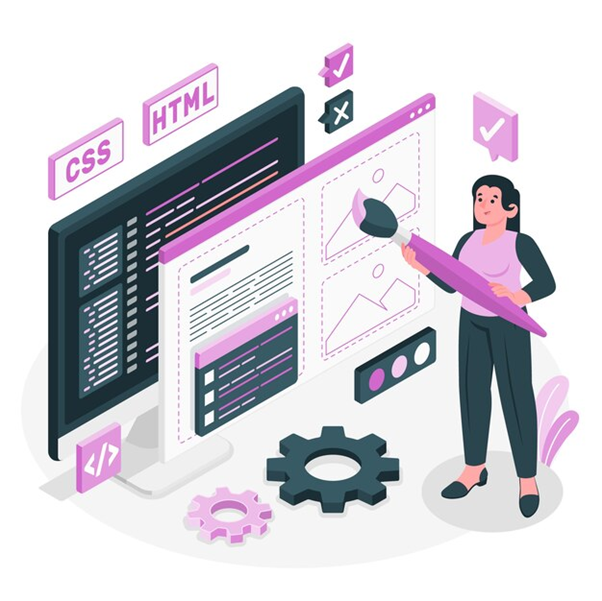In today’s digital era, web applications revolutionize user experiences by offering unmatched convenience and accessibility. The success of these applications largely depends on their User Interface (UI), where Cascading Style Sheets (CSS) play a crucial role. CSS transforms the layout and design of web app UIs, making them more engaging and user-friendly.
The impact of web applications on consumer behavior is significant. In 2022, consumer spending on apps reached a staggering $167 billion, highlighting the immense value users place on these platforms.
The development of a web application presents various challenges. Developers must possess a thorough understanding of the necessary tools and techniques. This knowledge is essential for creating solutions that effectively integrate web and mobile applications. Mobile application development solutions form a key part of this strategy, ensuring web apps perform optimally across all devices. This approach highlights the need for comprehensive development strategies that consider both web and mobile platforms.
CSS stands at the forefront of this technological evolution. But how does CSS, with its latest advancements, impact the UI of web applications, particularly in mobile compatibility? This exploration will reveal how CSS significantly influences user experience in web and mobile application development.

What is Web App UI and CSS?
Let us first learn about web app UI. The User Interface of a web application pertains to the functions that people may use to connect with the app. This includes all that the users see in the web app. The design, layout, navigation, and the like are part of the UI of web applications. All web applications have a User Interface employed that makes them unique from their competitors.
Now, let us explore what CSS is. Cascading Style Sheets (CSS) is a language in a computer used for developing web pages and applications alike. The CSS interprets the HTML design and, in turn, HTML integrates CSS coding in its processes.
Both web app UI and CSS complement each other. Now, let us learn how innovations in Cascading Style Sheets (CSS) impact web app UI, its creation, and development.
How CSS Innovations Revolutionize Web App UI
CSS continues to prosper and improve as time passes by. These innovations also revamp the User Interface of web applications. This does not only benefit the aesthetics of web application development. It also encourages the creation of smart UX designs that are responsive and sensitive to its users.
How CSS Can Help Improve Web App UI
First, let us explore how CSS can help improve the UI of a web app. Here are some of the aspects that CSS focuses on to improve web app UI:
- Aesthetics
- User-friendliness
- Cost and Time Efficiency
When it comes to a web page’s aesthetics, CSS offers more than other style sheets. CSS is primarily more flexible which is useful for web developers. There is more customizing available that elevates a web application’s appearance. Developers can add unique fonts, personalized color schemes, and special layouts that the web app necessitates.
Moreover, this helps in creating smart designs that prioritize the interest of users without compromising their aesthetics.
CSS also aids in creating user-friendly web applications. CSS offers uses that improve the navigation functions of a web application. You, in turn, will have a more accessible web application that can be used by more people. For example, CSS can help developers create designs sensitive to the needs of certain persons with disabilities. It aids in implementing assistive services like screen readers and braille options.
Before CSS, developing web applications through HTML can be costly and labor-intensive. However, the rise of CSS solved these problems and made the process more cost and time-efficient. Creating web applications efficiently also leads to having efficient maintenance processes that help keep web apps fresh and up-to-date.
How CSS Innovations Impact Web App UI
Now, let us look at how CSS updates change web app UI. Here are some ways that CSS innovations impact web app UI:
- Fresh Responsive Design Implementations
- Scroll-based Animations
- Nesting capabilities
CSS innovations make it possible for developers to create much more responsive designs in web applications. This means having independent responsive capabilities that are logically patterned in the web app’s UI. Hence, you would have User Interfaces that are more influential to the whole web app functions and processes made possible by employing feedback mechanisms.
Animations are taken up a notch as CSS continues to become better. Scroll-based animations leverage control of animation based on the scrolling position. This allows web applications to have images that appear as you scroll through the application. Users will have a more dynamic experience since having a scroll-based animation means having a more UX design as well.
Nesting enables developers to have more consistent codes that are non-repetitive. It streamlines several functions based on the unique conditions of web applications. A good example of utilizing nesting as a CSS innovation in web app development is the adapting interface as one shifts from portrait to landscape. This creates a web app UI that is adaptive and more comfortable to use.
Final Thoughts
CSS will continue to grow as time goes by. This will, in turn, continue to improve the game in creating and developing effective web app UI. As developers find new tricks in using CSS, it will ultimately make the lives of every person easier. Thus, highlighting the reliance of people on web applications and the internet.
